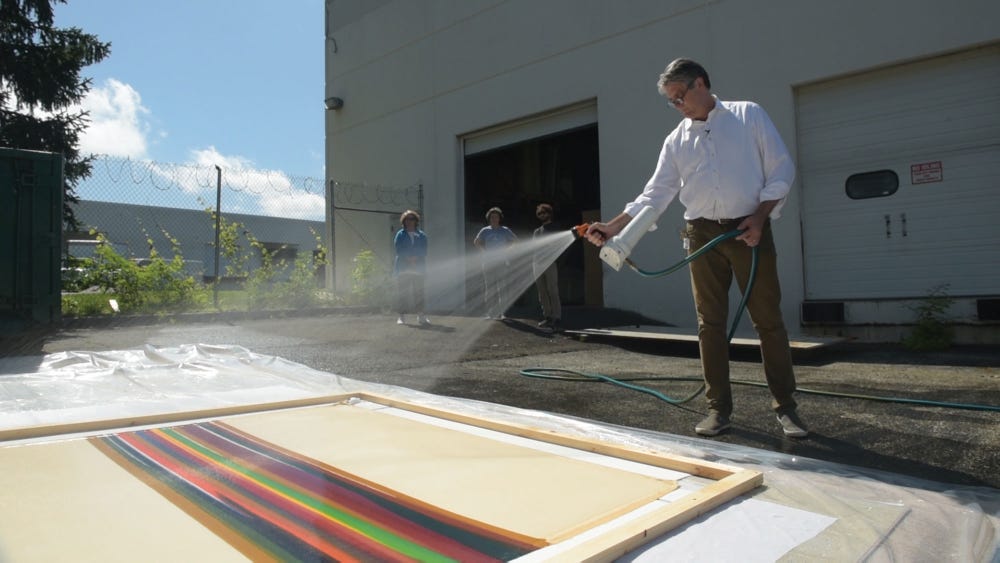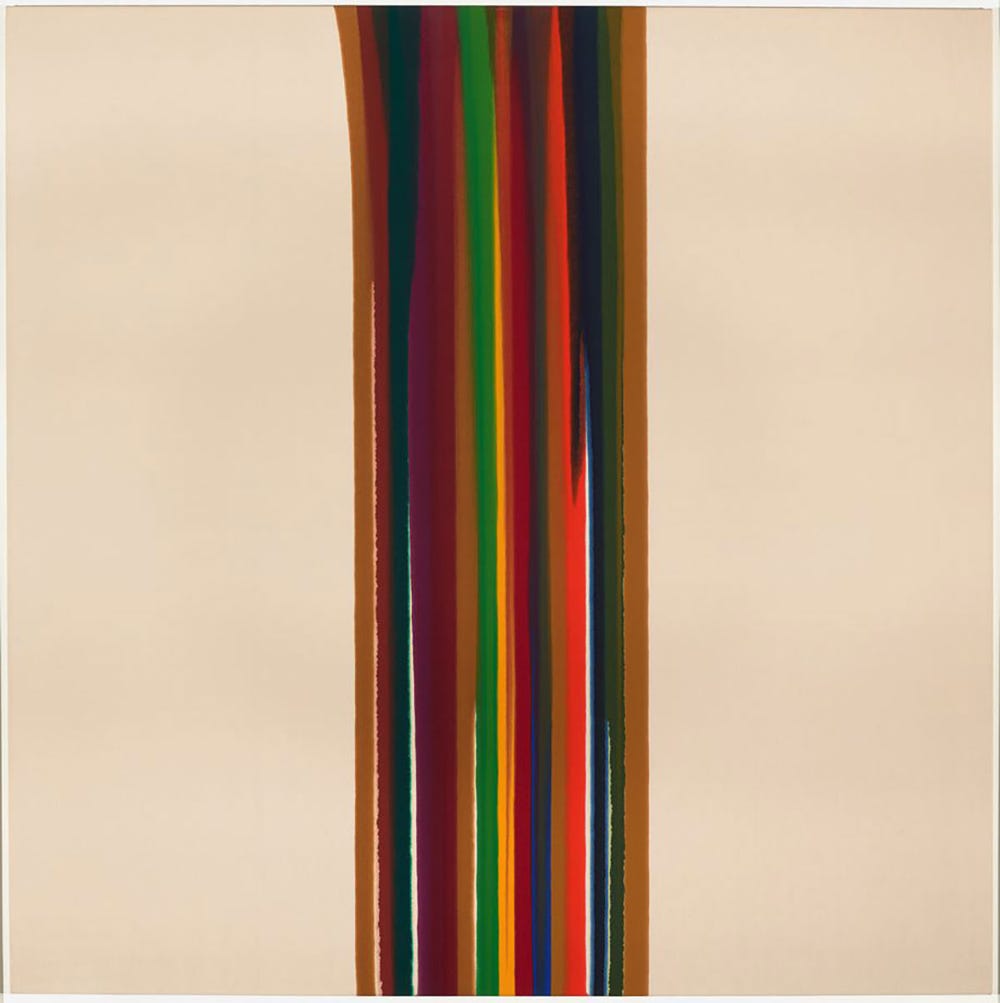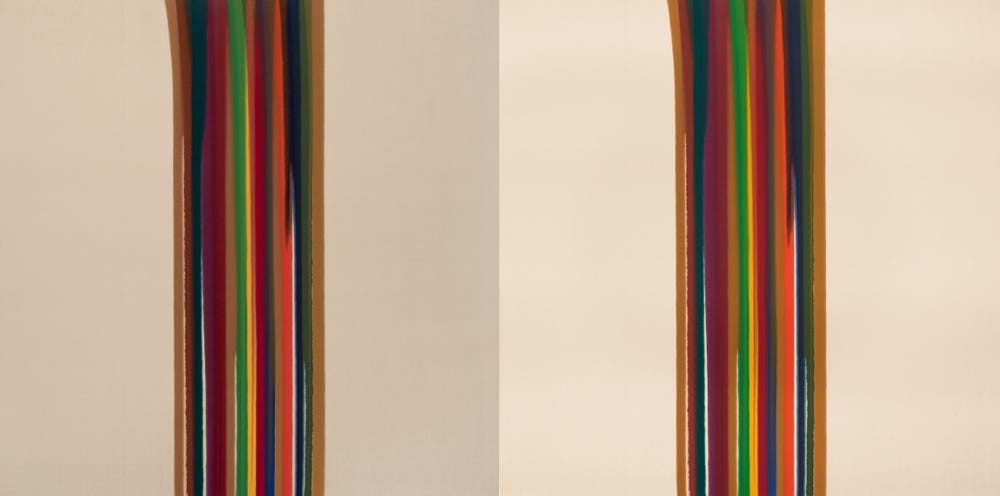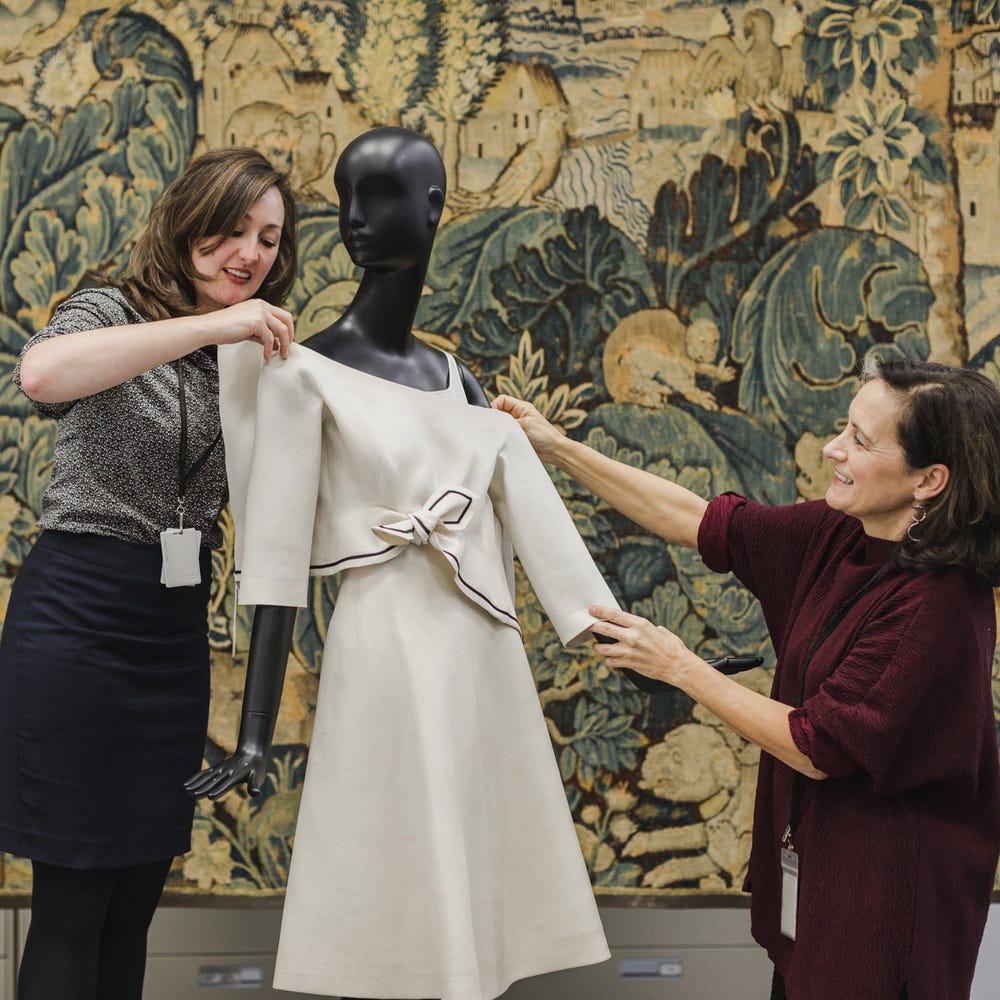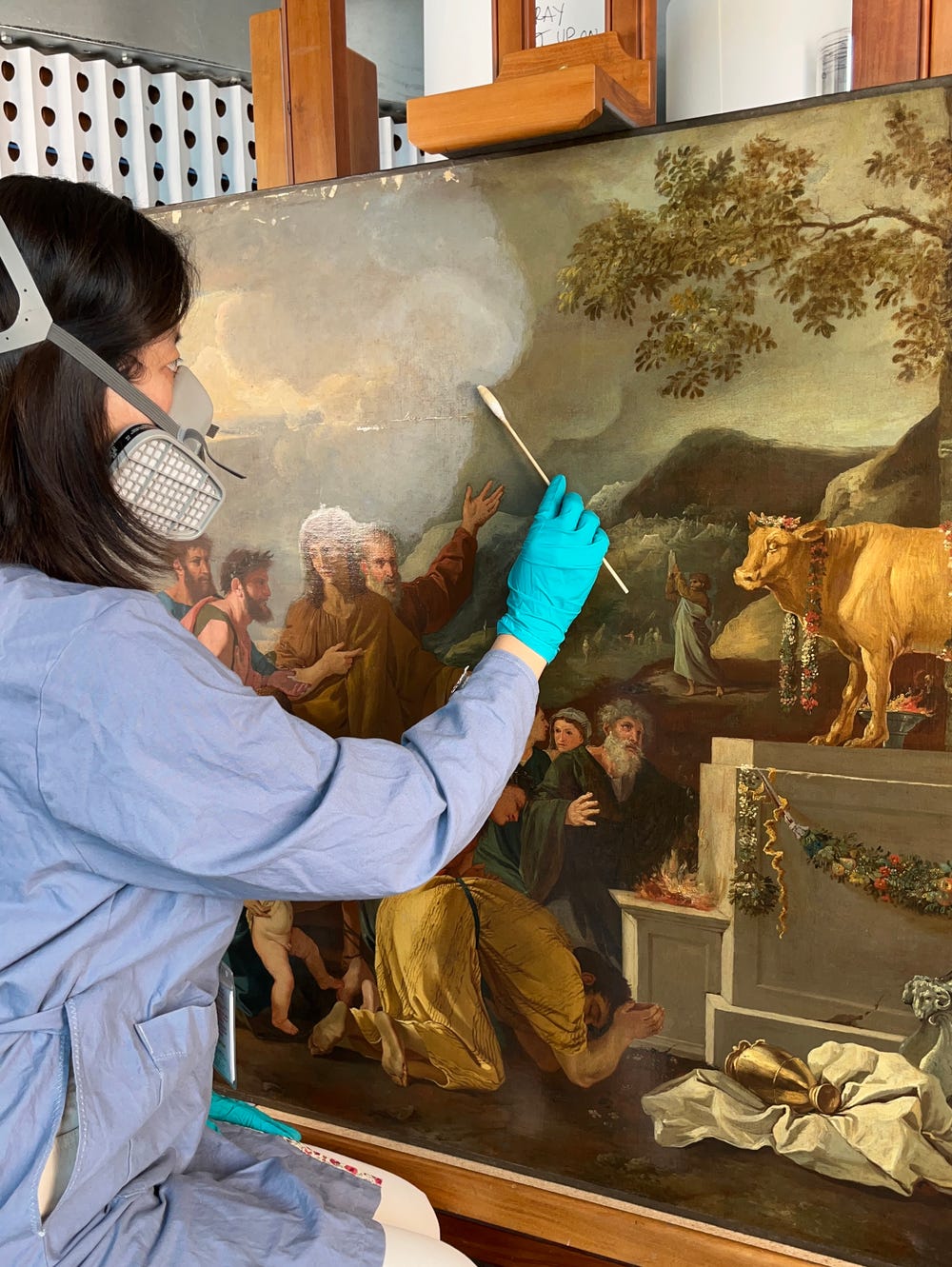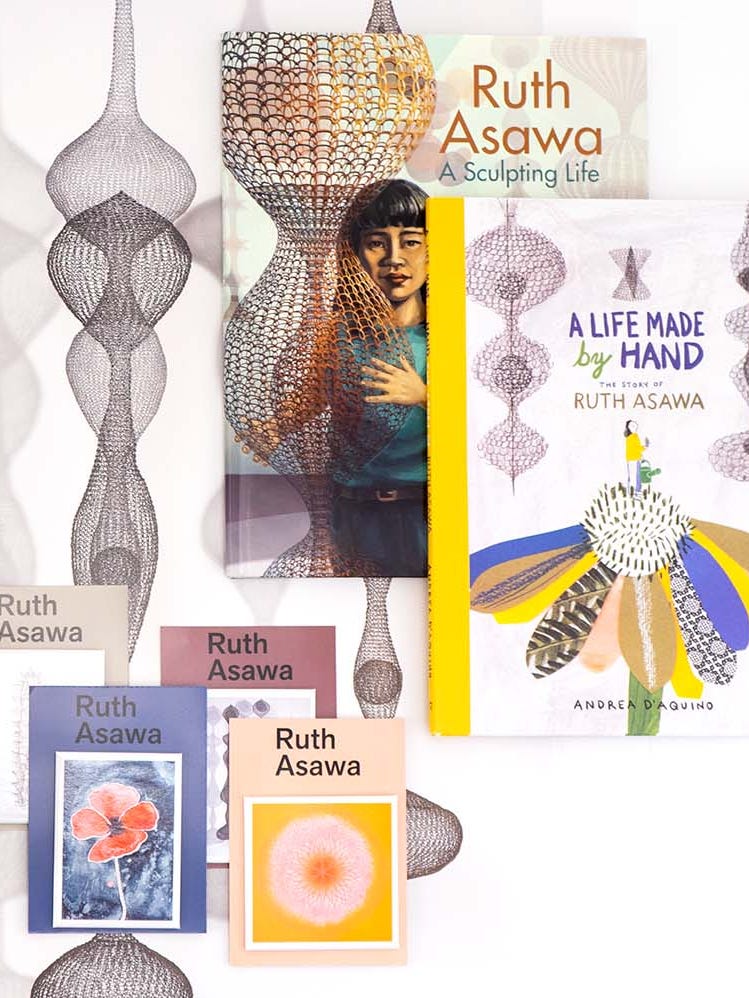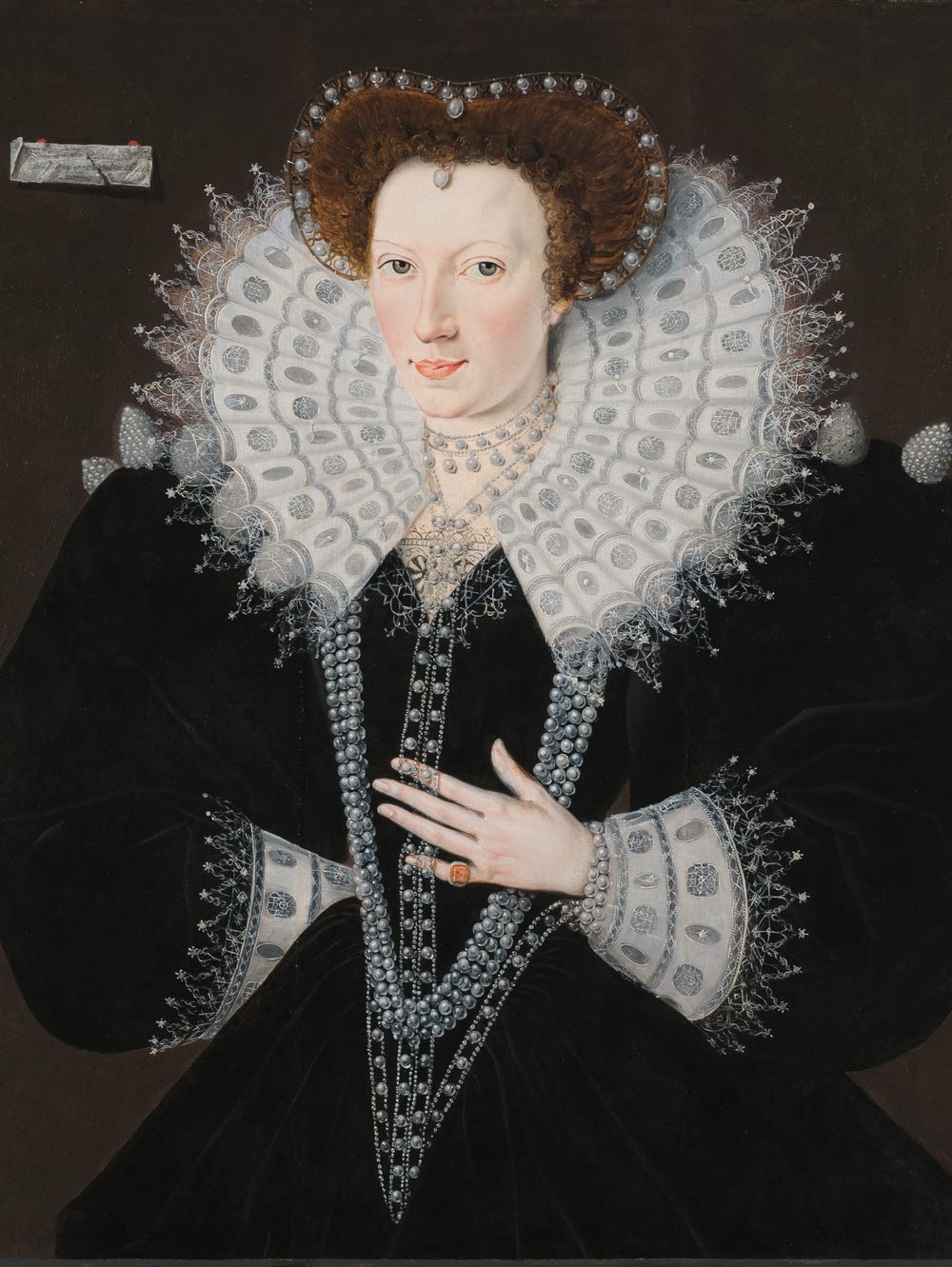Sun Bleaching Morris Louis’s “No. 11”
By Tricia O’Regan
February 28, 2019
Thanks to a generous grant from the 2017 Bank of America Conservation Project, Morris Louis’s painting No. 11 (1961) has undergone major conservation treatment. Louis (American, 1912 – 1962) is widely acclaimed for his influential style that bridged Abstract Expressionism, Color Field, and Minimalism. No. 11 serves as the most significant example of American Color Field painting in the Fine Arts Museums’ collection and has been a top priority for treatment since its acquisition in 2014.
Learn more about the conservation treatment in the video below.
Sun Bleaching Morris Louis’s No. 11
Color Field paintings such as No. 11 often present conservation challenges because of their nontraditional materials and treatment histories. Louis made the painting by pouring diluted Magna acrylic paints onto unprimed cotton duck, letting both artistic intention and chance control the paint’s flow. The translucent and opaque veils of color penetrate the fabric, acting more like a stain than a paint layer. The otherwise bare canvas remains extremely vulnerable to environmental factors, light degradation, and improper handling.
Based on its condition, No. 11 had likely been treated previously. Older methods of cleaning Color Field paintings included the selective sponge-washing of uncolored areas with a detergent, and the application of sizing to stiffen and tone the support. Over time, product oxidation from these treatments often resulted in significant yellowing of the unprimed cotton supports.
Before (left) and after (right) treatment. Morris Louis, No. 11, 1961. Acrylic on canvas, 78 x 78 in. (198.1 x 198.1 cm). Fine Arts Museums of San Francisco, Museum purchase, Phyllis C. Wattis Fund for Major Accessions, 2014.1. © Maryland Institute College of Art (MICA), Rights Administered by artists Rights Society (ARS), New York, All Rights Reserved
Louis’s innovative use of pristine expanses of cotton duck is critical in understanding these paintings, and the yellowed ground of No. 11 distorted the relationship between the Magna stripes and the empty fields surrounding them. Museum conservators decided to employ aqueous sun bleaching, a specialized technique that only a few conservators have mastered for painting treatments, and one that could not be accomplished in house.
With Bank of America’s generous support, the painting was brought to Maryland, where principal conservators Holly and Jay Krueger — who have been treating Color Field paintings with wet cleaning and light-bleaching since the mid-1990s — restored the proper tonal relationships to the painting. The grant also allowed Fine Arts Museums paintings conservator Patricia O’Regan to observe the treatment and learn this unique conservation process.
No. 11 is now ready to be enjoyed by visitors, seen as the artist intended.
Learn more about conservation at the Fine Arts Museums of San Francisco.
